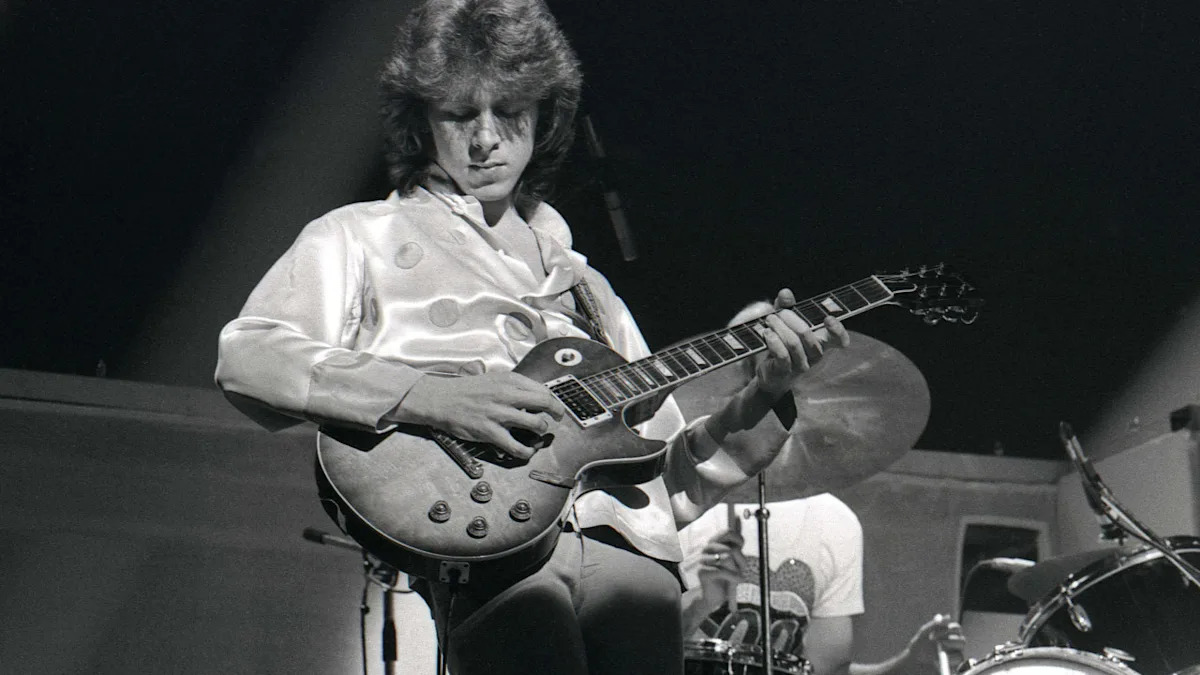’70s Rock Icon, 76, In Feud With Legendary Museum Over Lost Instrument originally appeared on Parade.
The Rolling Stones have a notoriously storied past, so it only makes sense that one of the band’s most recognizable instruments does, too.
The 1959 Gibson Les Paul, with its eye-catching sunburst finish, mahogany body, and maple top, is nothing short of an artifact for music historians and fans alike. It made its debut on United States television on The Ed Sullivan Show, where it was played by none other than Keith Richards, earning its nickname: the Keithburst. Today, the guitar is in the hands of New York City’s Metropolitan Museum of Art, but whether or not it belongs there is the subject of great dispute.
Mick Taylor, 76, may not be the most well-known member of The Rolling Stones, but he played guitar in the band between 1969 and 1974. While he was on tour with his previous band in 1967, Taylor claims that he bought the now-iconic Keithburst from The Rolling Stones’ road manager, and he brought it right back into the band when he joined them in his 1969 debut at Hyde Park in London.
According to Taylor, the Keithburst was stolen in 1971, along with seven other guitars, while the band was in France recording Exile On Main St. So, how it made its way to The Met is nothing short of perplexing— at least for Taylor. The guitarist, who was surprised to discover the guitar’s latest whereabouts, maintains that the instrument is his rightful property and that it should be returned to him.
In July 2025, Taylor’s manager, Marlies Damming, told Page Six, “There are numerous photos of Mick Taylor playing this Les Paul, as it was his main guitar until it disappeared. The interesting thing about these vintage Les Pauls (from the late 1950s), is that they are renowned for their flaming . . . which is unique, like a fingerprint.”
However, The Met remains adamant that Taylor never officially owned the guitar, and that his claim to it holds no merit. The museum’s provenance for the instrument states that the guitar was owned by Adrian Miller in 1971. Miller died in 2006, and there’s no record explaining how he came to own it.
In 2004, the guitar went up for auction at Christie’s, but it didn’t sell. After Miller’s death, it was purchased by Peter Svensson, a Swedish producer. Ten years later it was acquired by avid collector Dirk Ziff, who gifted it to the museum in 2025.
Despite playing guitar in one of the biggest bands in rock and roll, Taylor has always been a bit of an enigma. His voluntary departure from The Rolling Stones in 1974 left fellow bandmates offended and audiences stunned.
Even after more than five decades, little is known about the reasons he left the band, though there’s plenty of conjecture. Taylor has never outright explained his decision, though he alluded to a lifestyle that had taken its toll in a 2009 interview with the Sunday Mail. “Towards the end of my time with the Stones it got too crazy. I’d become very depressed. I felt my life with the band was falling apart so I decided to quit.
Taylor’s choice to leave was a loss that rippled through the band. Though Ronnie Wood, who has become a household name over the years, replaced the guitarist, something in the band shifted and has never quite shifted back.
“He was a very fluent, melodic player, which we never had, and we don’t have now,” frontman Mick Jagger told Rolling Stone in 1995. “Some people think that’s the best version of the band that existed.”
Taylor has yet to make an official statement, though Damming has issued a seemingly simple request to the museum by way of the The New York Times.
“We would like the Metropolitan Museum to make the guitar available so that we can inspect it, and confirm its provenance one way or the other,” the statement read.
According to the Met, no one has heard directly from Taylor or his representation.
’70s Rock Icon, 76, In Feud With Legendary Museum Over Lost Instrument first appeared on Parade on Aug 1, 2025
This story was originally reported by Parade on Aug 1, 2025, where it first appeared.
